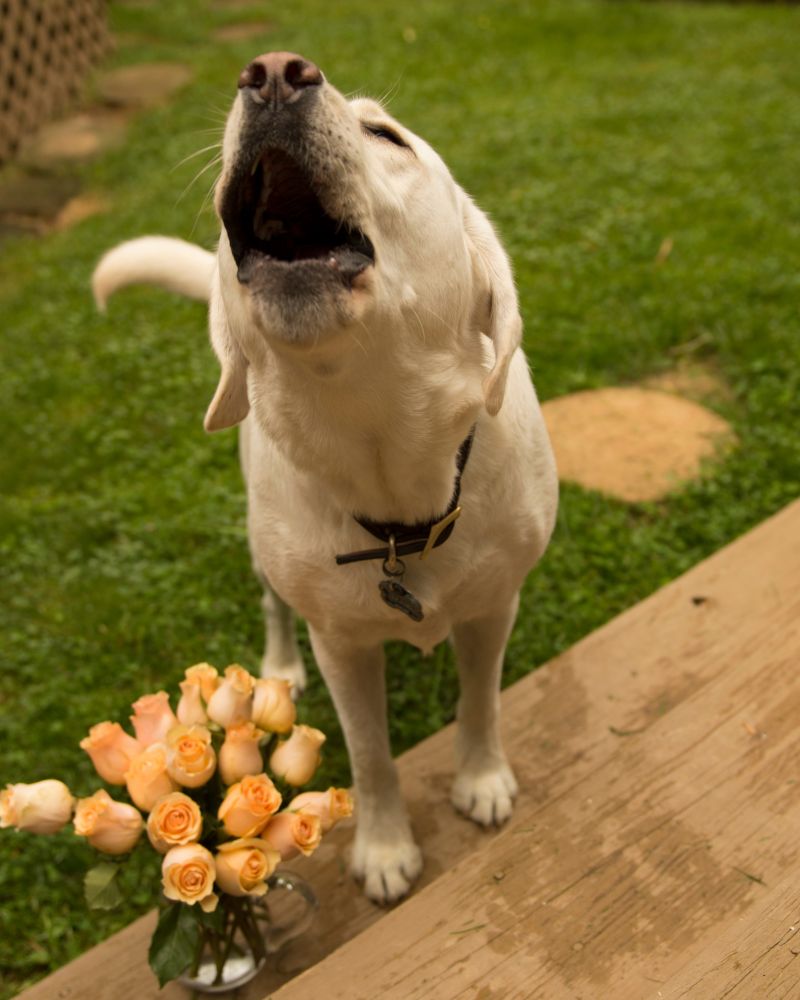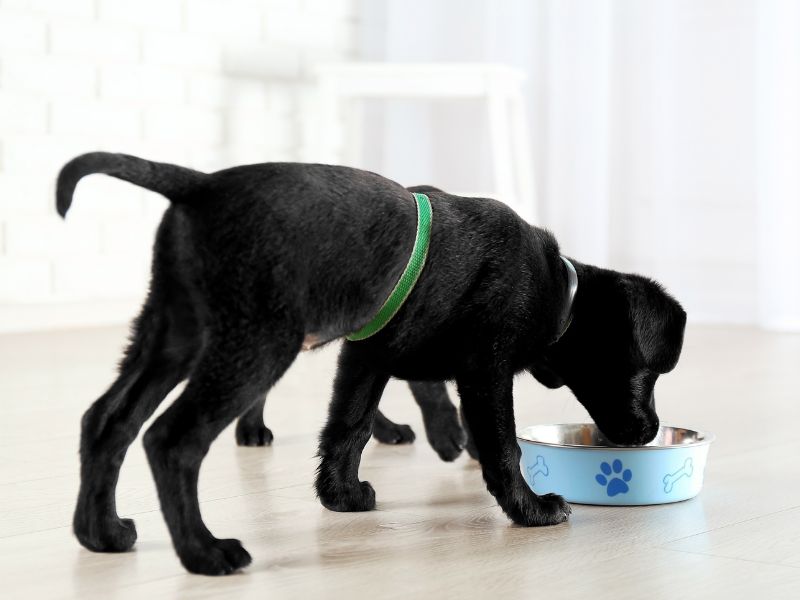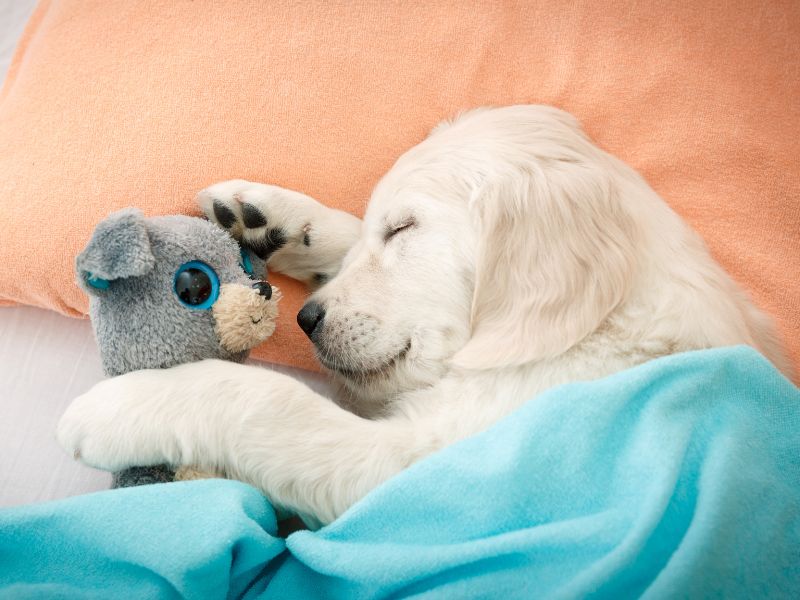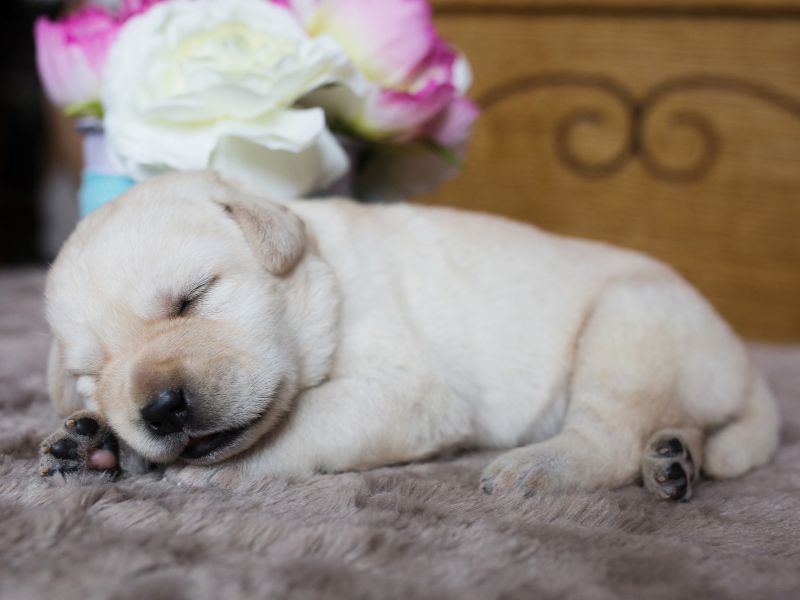
Welcoming a new Labrador puppy into your home is an exciting but sometimes challenging experience. One common issue that many new Labrador owners face is dealing with a puppy that cries often, usually due to separation anxiety or the stress of adjusting to a new environment. In this article, we will discuss different techniques and strategies to help comfort a crying Labrador puppy and make their transition smoother. When a Labrador puppy is taken away from its mother and siblings, it is natural for them to feel anxious and cry for their family, especially in the early stages of settling into a new home. Understanding why they are crying can help us better meet their needs and provide them with a sense of security in their new surroundings. It is essential to be patient and caring when comforting a crying Labrador puppy, as a calm and supportive environment can greatly improve their emotional well-being. There are various practical approaches that can be used to help alleviate a Labrador puppy’s anxiety, such as crate training, establishing a routine, and using positive reinforcement. In the next sections, we will discuss these methods in more detail and provide guidance on how to effectively implement them to help your puppy adjust to their new life and reduce their need to cry for comfort and companionship.

New puppies may cry at night for various reasons, such as feeling scared, hungry, or wanting companionship. It is important for pet parents to understand the reasons behind their puppy’s crying in order to address their needs appropriately. Puppies whine as a form of communication, expressing their emotions and seeking attention or reassurance. Labrador puppies, in particular, may cry at night due to various reasons like pain, hunger, or feeling scared. It is common for puppies to seek the presence of their owners during the night for comfort and security. To help your puppy adjust to sleeping alone, you can gradually move their crate further away from your bed while ensuring they have a cozy and safe sleeping area. While it may be tempting to comfort your puppy every time they cry at night, it is important for them to learn to sleep alone eventually. With patience and consistency, pet parents can help their puppy feel more comfortable sleeping on their own. Remember to provide a comforting environment with familiar scents and items to help ease their transition.

Dealing with a crying Labrador puppy at night can be a challenge, but ignoring their cries is not the best solution. It is important to figure out why your puppy is crying, whether it’s due to loneliness, hunger, or needing to go to the bathroom. By addressing their needs and providing comfort, you can help reduce their stress and create a peaceful sleep environment for both of you. There is no set time frame for how long a Labrador puppy might cry at night, as it varies from puppy to puppy. However, most puppies typically take about 3 to 4 days to adjust to their new surroundings and feel more at ease in their new home. During the night, a puppy may cry for a few minutes to an hour, depending on the reason behind their crying and how quickly their needs are met. Establishing a routine and offering consistent comfort can help your puppy feel secure and reduce their nighttime crying. To help your Labrador puppy settle at night, create a designated sleeping area free from distractions, take them for a final bathroom break before bedtime, and provide comforting items like a warm blanket or soft toy with your scent. Additionally, stick to a regular feeding schedule, ensuring your puppy is fed at least 2 hours before bedtime to prevent hunger-related crying. By following these steps and tending to your puppy’s needs, you can help minimize their crying at night and establish a restful sleep routine for both you and your furry companion.

Most puppies can start sleeping through the night by the time they reach 16 weeks old, although each dog is unique in their sleeping habits. It’s important to be patient and understanding when establishing a sleep routine for your puppy. To ensure your Labrador puppy has a peaceful night’s sleep, create a cozy and inviting sleep environment with a good dog crate, a comfortable bed, a warm blanket, and a comforting toy. Additionally, teach your puppy to enjoy their own company by gradually leaving them alone in a room for short periods throughout the day. Puppies tend to sleep longer than adult dogs, averaging around 18-20 hours a day, with most settling down for the night for 6 to 10 hours. Closing a puppy crate at night can create a den-like atmosphere that helps them feel secure and safe, but if your puppy is uncomfortable or cries, consider adjusting their crate training or bring their sleeping area closer to your bed. When dealing with a crying puppy during the day, focus on teaching them to be comfortable on their own and engage in other activities. Gradually increase the distance between you and your puppy during playtime to build their independence and provide mental stimulation with puzzle toys or hidden treats. Establishing a potty schedule is important to prevent crying due to bathroom needs, and addressing hunger or pain is essential to reduce daytime crying. Regular veterinary check-ups and consistent feeding schedules can help maintain your puppy’s health and well-being. In crate training, crate conditioning is a useful technique to help your puppy view their crate as a safe and comfortable space. Gradually introducing them to the crate with positive reinforcement and rewards can make them more comfortable and content spending time in it.

Introducing your Labrador puppy to the crate in a positive and gradual manner is key when it comes to crate training. You can start by placing their food and treats inside the crate, allowing them to come and go freely. This will help them associate the crate with positive experiences, making it a cozy and welcoming space. It’s crucial to make sure that the crate is the right size for your puppy, providing enough room for them to move around comfortably. A crate that is too small can cause distress for your puppy, leading to excessive crying. Encouraging your puppy to nap in the crate during the day is a great way to help them get used to it. Gradually increasing the time they spend in the crate while they are quiet can help them understand that being calm in the crate leads to getting out. This can also reduce their crying overall. As your puppy becomes more comfortable in the crate, you can start leaving them alone in the room. Begin by stepping out for short periods and slowly increasing the duration. This will help your puppy adjust to being alone in the crate. If they start crying, try not to immediately let them out; wait until they are quiet and calm to reinforce positive behavior. It’s important to ensure that your Labrador puppy gets enough exercise and interaction outside of the crate. A tired and happy puppy is more likely to settle in the crate without crying. When it comes to how long to let your puppy cry in the crate, it can vary depending on their adjustment to the crate and the intensity of their crying. It’s important to be patient and consistent in your training approach. Crate training a puppy at night requires a similar approach as during the day. Gradually increase the time they spend in the crate at night and reward quiet behavior to help them feel comfortable and secure.

When addressing learned crying in puppies, it’s crucial to understand the root cause of their distress and help them become comfortable with being alone or in a crate. If your Labrador puppy whines or cries in their crate, assess the situation to determine if they are scared, uncomfortable, or seeking attention. To ease their anxiety and make the crate a positive place, consider the following strategies: – Ensure the crate is cozy and inviting with soft bedding to create a comfortable environment. – Offer a special toy or treat that they only get when inside the crate to associate it with positive experiences. – Slowly increase the time they spend in the crate to help them acclimate to longer periods alone without feeling stressed. – Avoid reinforcing attention-seeking behavior by rewarding quiet and calm behavior rather than responding to whining. – To teach puppies to be alone, start by leaving them for short periods and gradually increasing the time as they become more comfortable. By implementing these methods and being patient with your puppy, they will learn to feel at ease in their crate and reduce instances of crying at night.

Labrador puppies need to learn how to be comfortable alone to prevent separation anxiety. Here are some tips to help them adjust: – Start with short alone time and gradually increase it. – Create a safe space for them to feel secure. – Provide toys or puzzles for mental stimulation. – Associate alone time with positive experiences. By addressing crying and teaching them to be comfortable alone, you can prevent behavioral issues. Dealing with a whimpering puppy at night can be challenging. Here are some tips: – Ensure they get enough exercise during the day. – Consider placing the crate near your bed for security. – Make the crate cozy with soft bedding or a Snuggle Puppy. – Use sleep aids like calming sprays or pheromone diffusers. – Be consistent with training and don’t give in to cries. By understanding your puppy’s needs and applying these tips, you can create a peaceful environment for your Labrador puppy to rest at night.

Assisting your labrador puppy in feeling secure and content in their crate during the daytime can greatly assist in nighttime crate training. By positively reinforcing good behavior throughout the day, you can help your puppy become more relaxed and quieter at night. The following steps offer guidance on how to encourage silence while crate training your labrador puppy during the day: 1. Create an appealing crate environment: Make the crate a welcoming space by adding a soft blanket or bed inside. Placing the crate in a room where your family spends time together can help your puppy feel less isolated during the day. The Humane Society suggests removing the crate door or keeping it open in a family room. 2. Establish a crate routine: Develop a daily routine that includes playtime, bathroom breaks, and crate time to encourage your puppy to enter the crate willingly. Feeding meals and giving treats inside the crate can help your puppy associate positive experiences with their crate. 3. Reward silence and disregard whining: When your puppy is quiet in the crate, reward them with a treat or praise. If they start whining, ignore the behavior until they calm down before offering any attention or rewards. This can help them understand that calmness in the crate is rewarded, while whining is not. 4. Gradually extend crate time: Start with short periods in the crate and gradually increase the duration to help your puppy get used to and comfortable in their crate. This can reduce the likelihood of nighttime crying. 5. Monitor your puppy: Using a camera to keep an eye on your puppy in the crate during the day can help you address any issues and reinforce positive behaviors in real-time, according to Preventive Vet. By following these steps to encourage your labrador puppy’s silence during the day, you can set the groundwork for a more successful crate training experience at night. Crate training, when done correctly, can help your puppy feel secure in their crate and reduce their likelihood of crying. To make crate training a success, remember to choose the right size crate, introduce your puppy gradually, create a cozy space, and establish a consistent routine for eating, playing, and sleeping.

Labrador puppies often cry and whine, particularly during their initial nights in a new home. While this behavior may be somewhat exhausting for the new owner, it’s essential to recognize that the puppy is simply adjusting to its unfamiliar surroundings. There are various ways to help the puppy stop crying in a gentle and compassionate manner. One approach to assist a crying labrador puppy is to place them near your bed in a box or crate. By being in close proximity to you, the puppy can smell and hear your presence, and if they become restless or upset, you can offer reassurance by gently comforting them. This method can promote a sense of security and calmness for the puppy. Another strategy to soothe a crying puppy is to provide them with a cozy and warm sleeping area. One way to achieve this is by placing a microwave-heated towel in the puppy’s crate or pen. The warmth from the towel can offer comfort to the puppy, aiding them in settling down. It’s crucial to address the puppy’s crying and not disregard it in the hopes that it will cease on its own. Remaining composed and tender is vital, as the puppy can pick up on your demeanor. By providing comfort and reassurance, the puppy can gradually feel more at ease and relaxed in its new environment. Dealing with a Crying Puppy The sound of a crying labrador puppy, particularly at night, can be distressing for any pet owner. Fortunately, there are some effective strategies you can employ to help your puppy feel more secure and reduce their crying. One effective method is to place your puppy’s crate or bed near your own bed at night. This allows your puppy to sense your presence through smell and sound, which can offer them comfort and reassurance. If your puppy becomes restless or cries, you can extend a hand to provide comfort and support. Providing your puppy with stimulating activities and distractions can also be helpful. Interactive puzzle toys with hidden treats can keep your puppy engaged while you gradually increase the distance between you and your pet. This can aid in developing your puppy’s independence and focus on alternative activities. Creating a comfortable and inviting sleep space is essential for your puppy. Invest in a quality crate or bed, and furnish it with a cozy blanket and comforting toy. Additionally, using pheromone sprays or diffusers can promote a sense of relaxation and calmness for your puppy. If your puppy’s crying persists despite trying these methods, it may indicate underlying issues such as separation anxiety. In such cases, seeking guidance from a veterinarian or professional dog trainer is recommended to address the root cause of the crying behavior.


